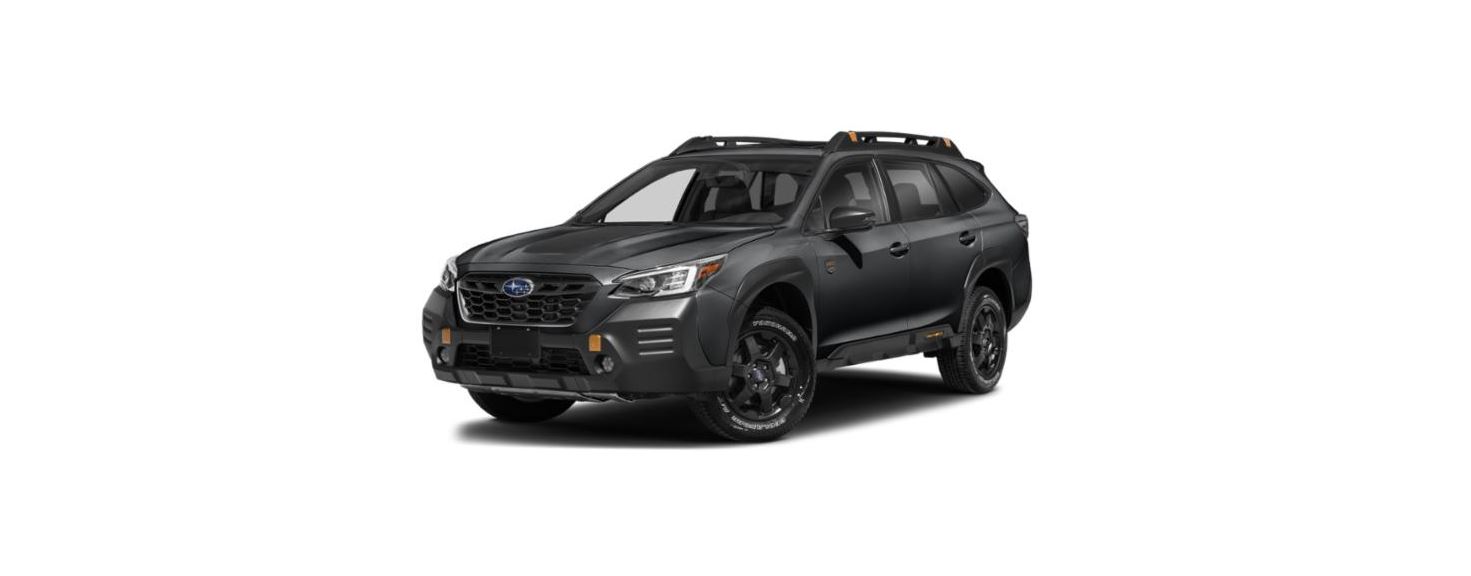2022 Subaru Outback Flat Tires
 Flat Tires
Flat Tires
If you have a flat tire while driving, never brake suddenly; keep driving straight ahead while gradually reducing speed. Then slowly pull off the road to a safe place.
Changing a Flat Tire
WARNING
- Use only the jack and the jack handle provided with your vehicle. The jack supplied with the vehicle is designed only for changing a tire. Never get under the vehicle while supporting the vehicle with this jack.
- Do not jack up the vehicle on an incline or a loose road surface. The jack can come out of the jacking point or sink into the ground and this can result in serious injury or death.
- Before jacking up the vehicle, be sure that there are no occupants or cargo on board.
- Do not jack up the vehicle with an object on or underneath the jack. The jack can be unstable and this can result in a severe accident.
- Always turn off the engine before raising the flat tire off the ground using the jack. Never swing or push the vehicle supported with the jack. The jack can come out of the jacking point due to a jolt and this can result in serious injury or death.
- All passengers must exit the vehicle before you raise it with the jack. Raising the vehicle with someone inside of it could result in serious injury or death.
- Do not start the vehicle while it is supported by the jack. Doing so could result in serious injury or death.
CAUTION
Do not hit and bend the disc rotor backing plate when removing and installing the tire. A bent backing plate may scrape against the disc rotor and cause noise while the vehicle is in motion.
NOTE
Contact a SUBARU dealer when jacking up the vehicle using a garage jack.
- Park on a hard, level surface, whenever possible, then stop the engine.
- Apply the parking brake and shift the select lever in the “P” (Park) position.
- Turn on the hazard warning flasher and unload all occupants and luggage from the vehicle.
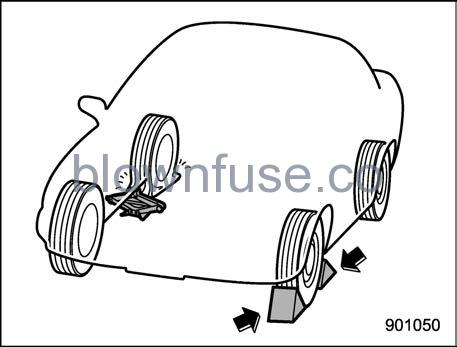
- Put wheel blocks at the front and rear of the tire diagonally opposite the flat tire.
- Take out the jack, jack handle, and wheel nut wrench. The tools and the spare tire are stored under the floor of the trunk (Legacy) or the cargo area (Outback/Subaru Outback Wilderness). Refer to “Maintenance Tools” P459.
- Take out the under-floor storage compartment and turn the attaching bolt counterclockwise, then take the spare tire out.
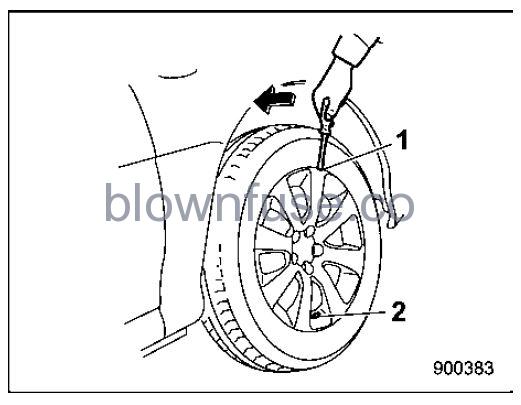
- Notch
- Valve hole
- If your vehicle has wheel covers, insert a flat-head screwdriver into the notch on the opposite side of the valve hole and pry the wheel cover to remove it.
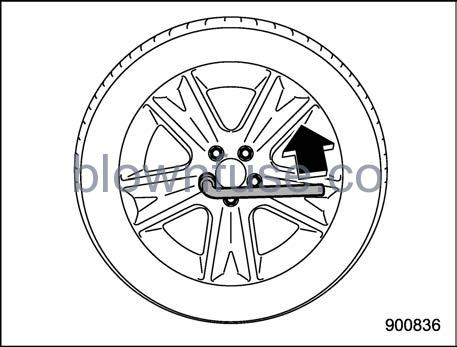
- Loosen the wheel nuts using the wheel nut wrench but do not remove the nuts
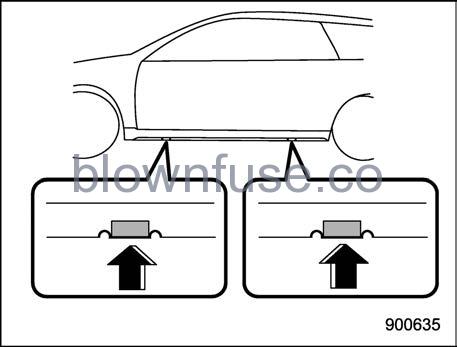
- Place the jack under the side sill at the front or rear jack-up point closest to the flat tire.
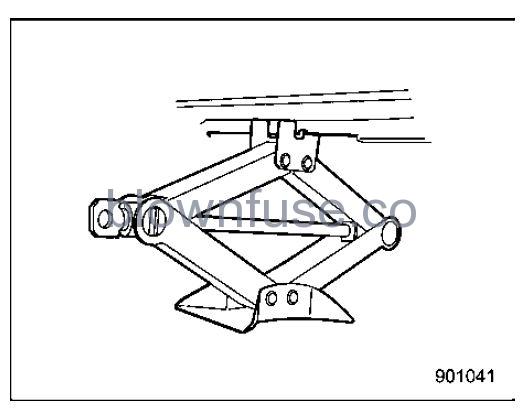 Turn the jackscrew by hand until the jack head engages firmly into the jack-up point
Turn the jackscrew by hand until the jack head engages firmly into the jack-up point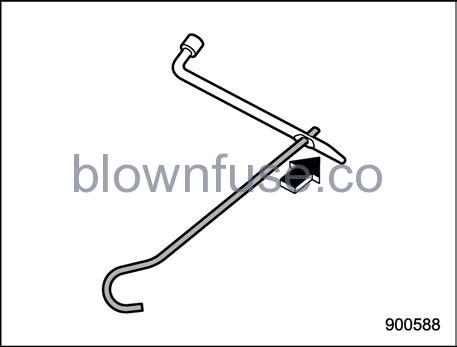
- Insert the jack handle into the hole of the wheel nut wrench
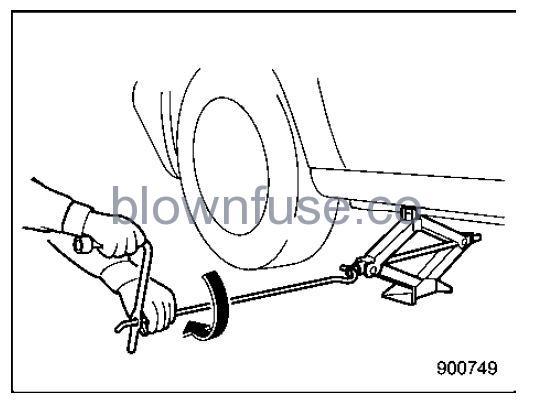
- Insert the jack handle into the jackscrew, and turn the handle until the tire clears the ground. Do not raise the vehicle higher than necessary.
- Remove the wheel nuts and the flat tire.
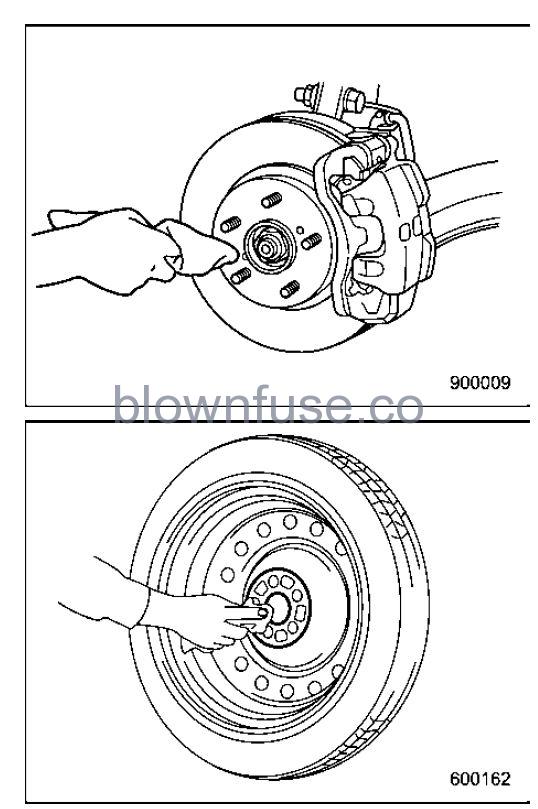
- Before putting the spare tire on, clean the mounting surface of the wheel and hub with a cloth.
- Put on the spare tire. Replace the wheel nuts. Tighten them by hand.
- Turn the jack handle counterclockwise to lower the vehicle.
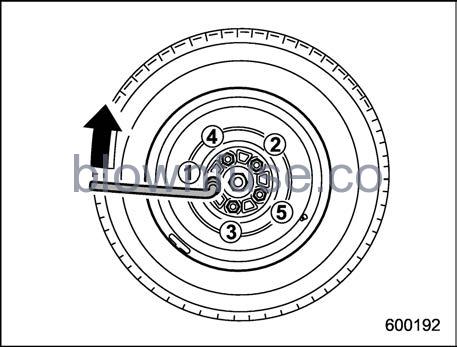
- Use the wheel nut wrench to securely tighten the wheel nuts to the specified torque, following the tightening order in the illustration.
For the wheel nut tightening torque, refer to “Tires” P546. Never use your foot on the wheel nut wrench or a pipe extension on the wrench because you may exceed the specified torque. Have the wheel nut torque checked at the nearest automotive service facility?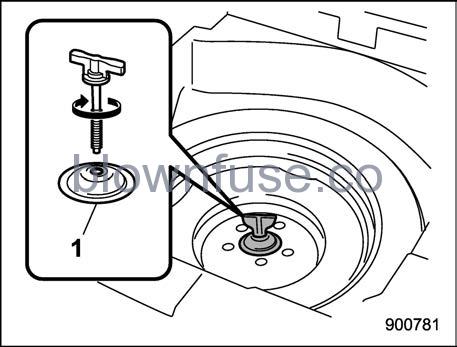
- Support holder
- Store the flat tire in the spare tire compartment. Install with the support holder facing upward and secure the flat tire by firmly tightening the attaching bolt.
NOTE If you cannot fix the flat tire firmly, try turning the support holder upside down. - Store the jack, jack handle, and wheel nut wrench in their storage locations.
NOTE
- Make sure that the jack is well lubricated before using it.
- To take out the tools and spare tire, store the cargo area cover to the original position and open the underfloor storage. Refer to “Under-Floor Storage Compartment” P325.
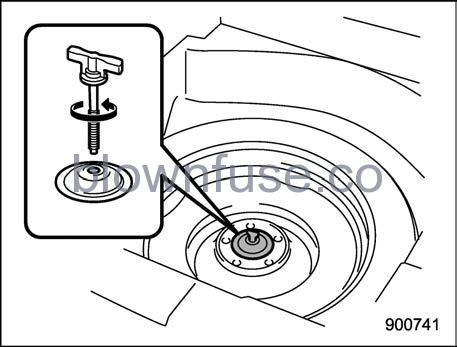
WARNING
Never place a tire or tire changing tools in the passenger compartment after changing wheels. In a sudden stop or collision, loose equipment could strike occupants and cause injury. Store the tire and all tools in the proper place
Tire Pressure Monitoring System (TPMS) (U.S.-Spec. Models)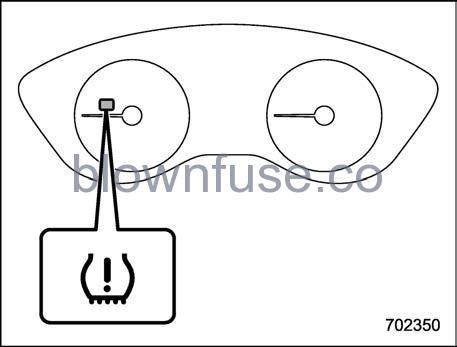
The tire pressure monitoring system provides the driver with the warning message indicated by sending a signal from a sensor that is installed in each wheel when tire pressure is severely low. The tire pressure monitoring system will activate only when the vehicle is driven. Also, this system may not react immediately to a sudden drop in tire pressure (for example, a blow-out caused by running over a sharp object)
WARNING
- If the low tire pressure warning light illuminates while driving, never brake suddenly. Instead, perform the following procedure. Otherwise, an accident involving serious vehicle damage and serious personal injury could occur.
- Keep driving straight ahead while gradually reducing speed.
- Slowly pull off the road to a safe place.
- Check the pressure for all four tires and adjust the pressure to the COLD tire pressure shown on the vehicle placard on the door pillar on the driver’s side.
- If this light still illuminates while driving after adjusting the tire pressure, a tire may have significant damage and a fast leak that causes the tire to lose air rapidly. If you have a flat tire, replace it with a spare tire as soon as possible.
- When a spare tire is mounted or a wheel rim is replaced without the original pressure sensor/transmitter being transferred, the low tire pressure warning light will illuminate steadily after blinking for approximately one minute. This indicates the TPMS is unable to monitor all four road wheels. Contact your SUBARU dealer as soon as possible for tire and sensor replacement and/or system resetting.
- When a tire is repaired with liquid sealant, the tire pressure warning valve and transmitter may not operate properly. If a liquid sealant is used, contact your nearest SUBARU dealer or another qualified service shop as soon as possible. Make sure to replace the tire pressure warning valve and transmitter when replacing the tire. You may reuse the wheel if there is no damage to it and if the sealant residue is properly cleaned off. If the light illuminates steadily after blinking for approximately one minute, promptly contact a SUBARU dealer to have the system inspected
TPMS Screen (U.S.Spec. Models)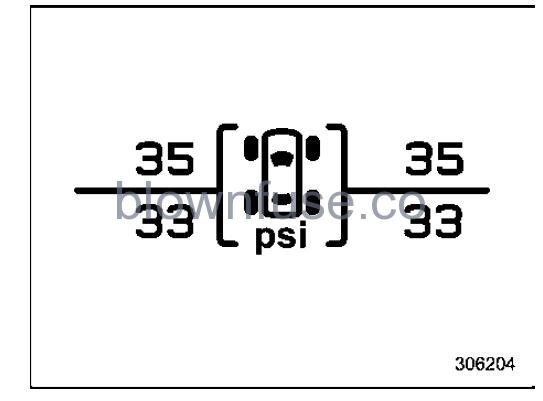
This screen displays each tire pressure. Refer to “Basic Screens” P208
